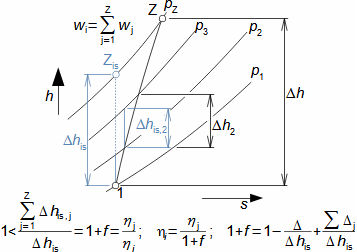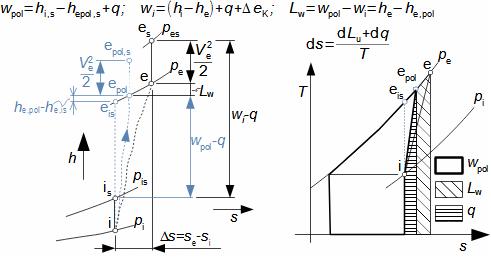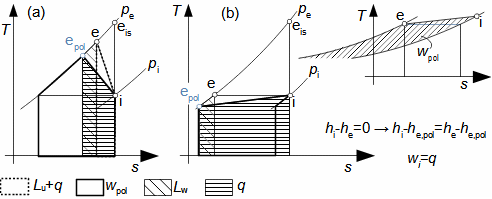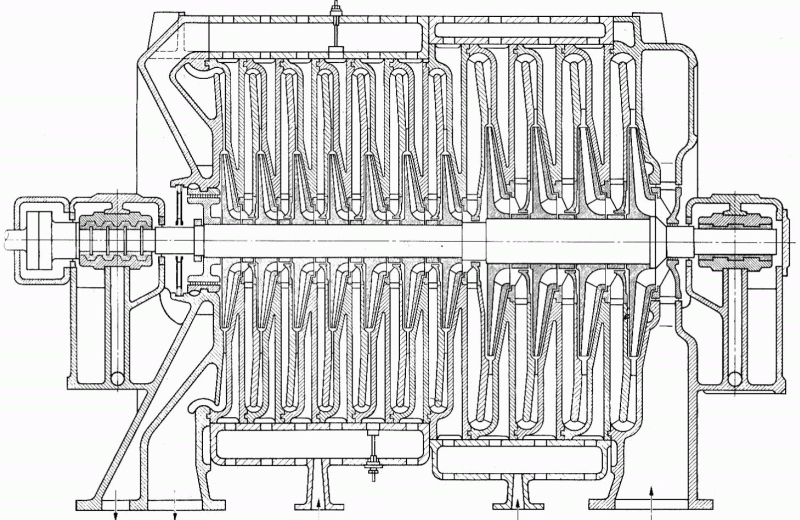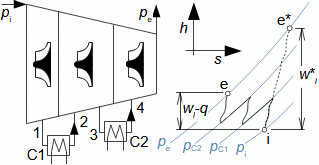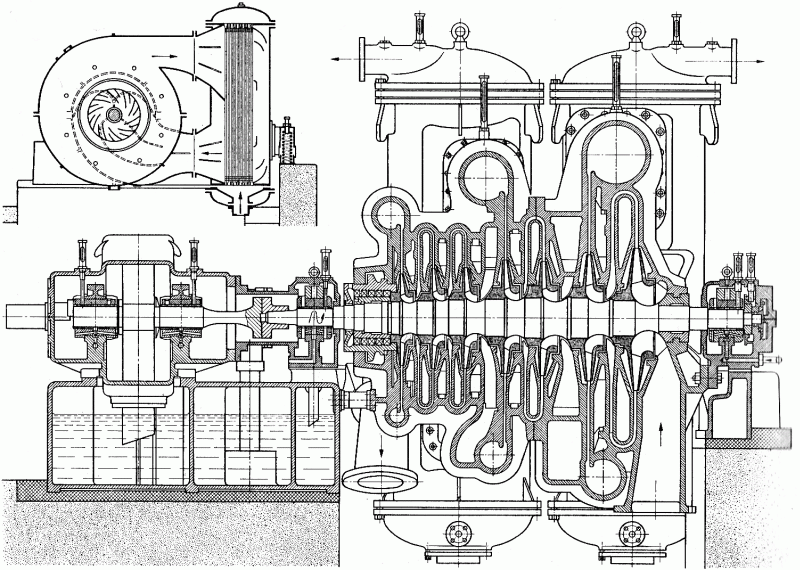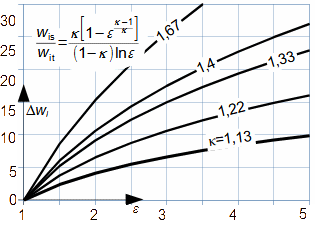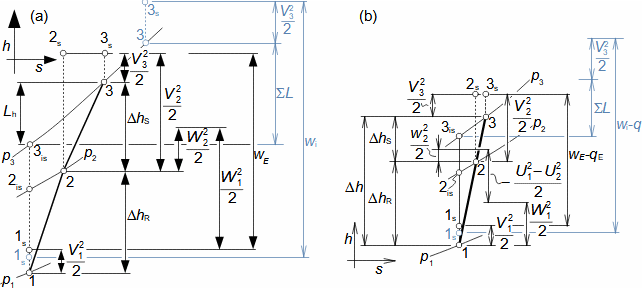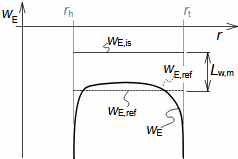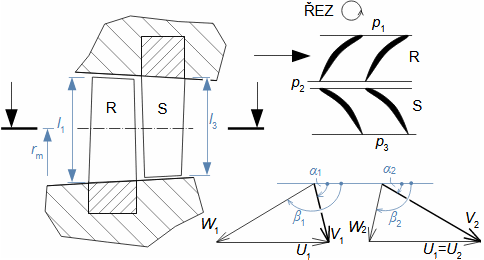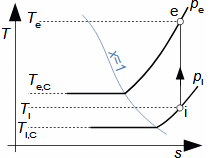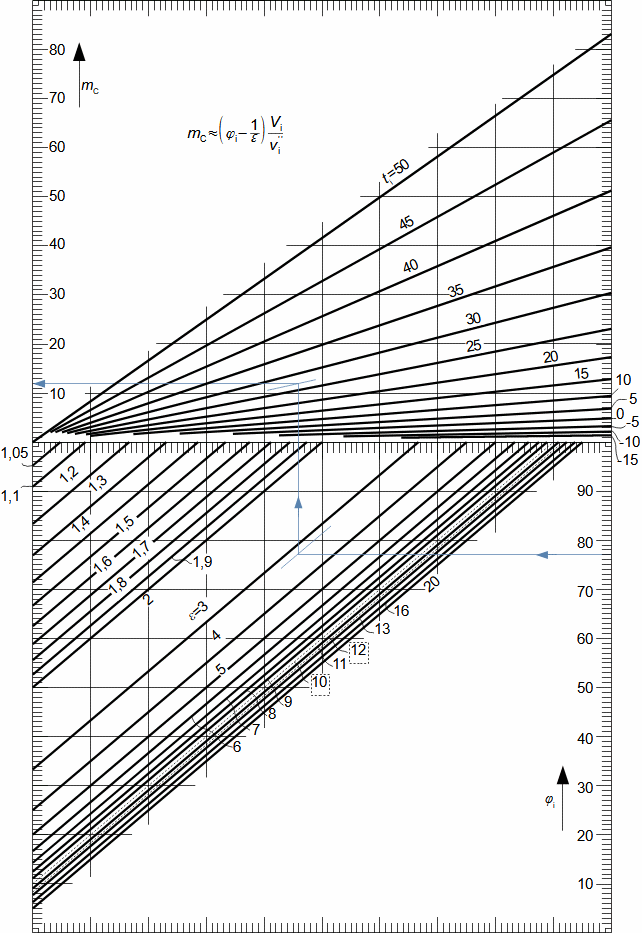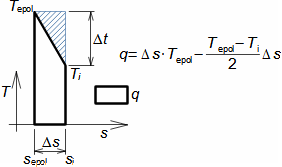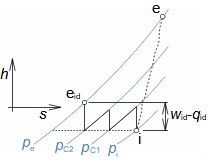Compression in turbocompressorCompression ratioThe characteristic feature of compression in a turbocompressor is the continuity of the process of transformation of work into pressure and internal energy of a working gas. The basic requirement is to increase the pressure, or achieve the required compression ratio (see Equation 1), with a minimum increase in temperature, which increases significantly, especially if the compression is not cooled.  1: Compression ratio of compressor p [Pa] pressure; ε [1] compression ratio. The index i indicates the state at the inlet to the turbocompressor, the index e indicates the state at the outlet of the turbocompressor.When investigating a compression process, it is necessary to distinguish between single- and multi-stage compression. Both compressions require a little different approach to understanding the causes of losses and an approach to determining measures to reduce them. Adiabatic compressionThe adiabatic compression computational model is used in cases where no significant effect of heat exchange with the turbocompressor surroundings is expected. Isoentropic compressionOutlet velocityThe ideal internal work of adiabatic compression corresponds to that of isentropic compression. In ideal compression, the same outlet velocity is usually expected as in actual compression. This means that the actual machine must have a slightly larger flow area than an ideal machine because the heat loss increases the specific volume of the working gas. Additional lossesLoss heatInternal workh-s chartT-s chartLossesA characteristic feature of real compression is the so-called additional losses Δ. These losses are equivalent to the extra work that has to be added due to the increase in the specific volume of the working gas caused by the loss heat. Figure 2 shows an example of compression in a compressor or its stage in h-s and T-s charts. While in the h-s chart only the losses as a whole can be distinguished, in the T-s chart the individual types of losses can be distinguished. |

